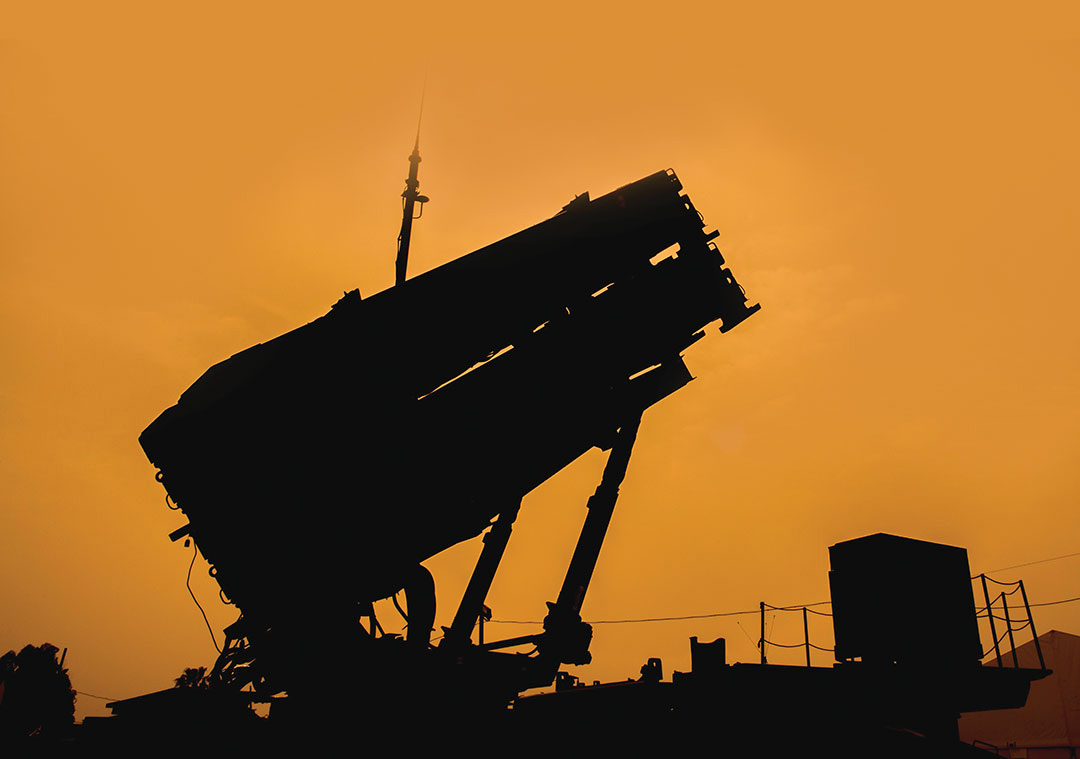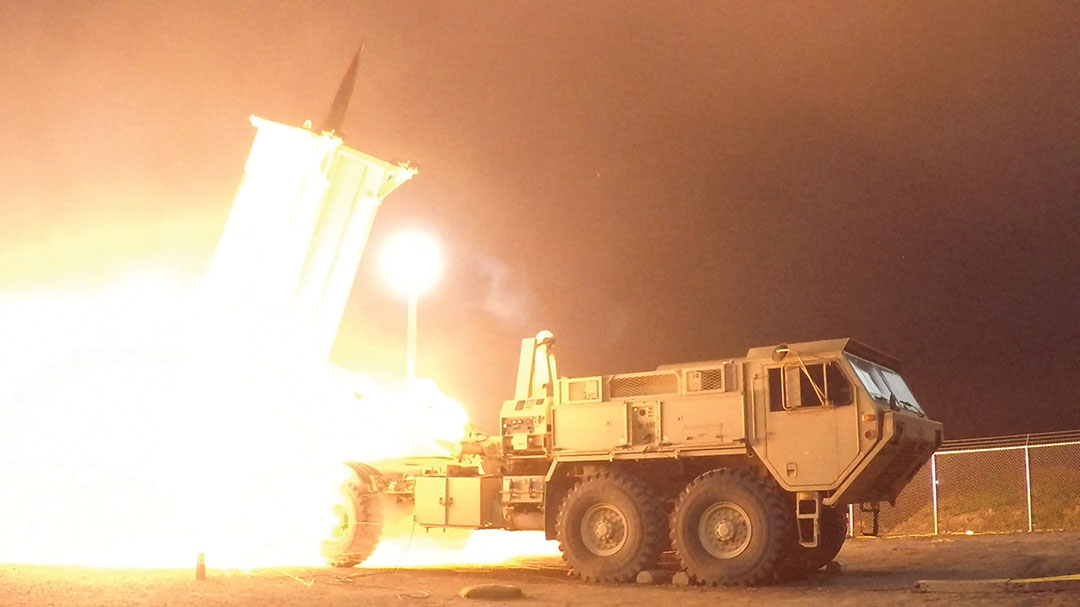Test of next-generation integrated air and missile defense system successful
THE WATCH Staff
Victory on the battlefield of the future will not necessarily go to the largest or strongest force, but rather to the most agile — to the force that gathers, processes and communicates information rapidly and effectively. The Integrated Air and Missile Defense Battle Command System (IBCS) is a force multiplier that aims to enable the United States and eventually allied forces to do just that.
The IBCS, a “system of systems” in development by Northrop Grumman, is the future command-and-control system for U.S. Army air and missile defense. According to the Army, “a common integrated fire control capability with a distributed ‘plug-and-fight’ network architecture” will be more effective and efficient, allowing air defense units to defend larger areas and reduce the chance of interceptor waste from multiple interceptors engaging the same target.
The IBCS will integrate communications among launchers, sensors and command nodes of all sorts of weapons systems, including missile intercept systems such as the Patriot and the Terminal High Altitude Area Defense (THAAD), the Army’s Indirect Fire Protection Capability, other weapons platforms and combat aircraft. An important multidomain operations feature of the IBCS is its ability to employ the F-35 fighter as an elevated sensor because it can detect threats that ground-based sensors alone might miss.
The Army conducted a successful intercept test on December 12, 2019, at the White Sands Missile Range in New Mexico where IBCS simultaneously detected, tracked and intercepted two cruise missiles that maneuvered in formation before splitting to attack separate targets. The test used the Sentinel radar, the Marine TPS-59 radar, Patriot air defense batteries and two U.S. Air Force F-35s that contributed to tracking the incoming missiles. The interservice combination of systems demonstrates the essential interoperable IBCS capability of integrating disparate weapons systems.
It was the final developmental flight test before operational testing begins in 2020, according to the Army. IBCS has been in development for some time, but software problems in 2016 and a decision to expand the mission pushed back the deployment date to 2022. Instead of integrating just Army air and missile defense systems, the new mission aims to include multiple sensors across domains to create a layered defense. The system will integrate existing weapons systems as well as new platforms as they are developed.
IBCS is based on the concept of “any sensor, best shooter.” Radars from different systems work together to find and track targets, and “pass the targeting data to whichever launcher is best able to take the shot,” a 2018 article on the Breaking Defense website explained. For example, a Patriot launcher could be in the best place to engage a target not tracked by organic radar, perhaps due to a technical malfunction or enemy electronic warfare, but IBCS would enable the Patriot to take the shot guided by other sensors in the network. IBCS also has the capability to “self-configure as a mobile ad hoc network” as different nodes come on and offline, Northrop Grumman explained during an earlier round of testing in August 2018.
A key feature of IBCS is its use of open architecture design, with “hardware, software and middleware designed as plug-and-play modules that all follow common standards,” according to Breaking Defense. This has allowed IBCS to bypass a common problem in military hardware in which specific software designs for different systems have, for example, made it difficult for different types of Patriots to exchange data.

IBCS will contribute to the agility needed for future threats that the U.S. and allied forces might face. “The recent hostilities between Iran and the United States reinforce the importance of investing in military capabilities,” retired U.S. Air Force Lt. Gen. David Deptula, dean of the Air Force Academy’s Mitchell Institute for Aerospace Power Studies, wrote in a January 2020 article for Breaking Defense. Along with fifth-generation aircraft, such as the F-22, F-35 and B-21, IBCS is an important piece of America’s future defense. “Iran possesses the ability to launch a large volume of missiles against neighbors,” Deptula noted, and IBCS would help counter that ability.
IBCS, initially intended to integrate U.S. Army air and missile defense systems, is now being expanded to include multidomain interoperability across services to include a disparate array of sensors and platforms. It is also being integrated into the Advanced Battle Management System (ABMS) program being led by the U.S. Air Force. ABMS is an ambitious program that also envisions a modular command-and-control system developed with a layered acquisition approach and demonstrated in three yearly exercises. The next ABMS exercise in September 2020 is designed around a homeland defense scenario and is being operationally led by U.S. Northern Command. The ultimate goal of ABMS is a military internet of things used by all services and allies.

The program could deliver substantial benefits to U.S. partners and allies in forming a collective defense. Retired U.S. Air Force Brig. Gen. David Baczewski made a convincing case for a fully integrated NATO air and missile defense capability in an April 2018 opinion column for the Polish website Defence24.com, pointing out that the Russian threat to Poland and other NATO allies in the Baltics is real. He argued for the NATO-wide adoption of the open system architecture approach incorporated by the IBCS program “to provide an adaptable and readily upgradeable technology basis for both new and legacy systems as well as support the development and integration of future capabilities.”
Poland, perhaps because of its hard-earned familiarity with its large eastern neighbor, has shown a commitment to building a military defense capable of protecting itself and countries nearby. “Poland has become a stalwart member of NATO and a close ally of the United States,” Dan Goure wrote in The National Interest magazine. As such, Poland will be the first allied country to acquire the IBCS as part of its air defense system. “A robust, modern, integrated Polish air defense will complicate Russian attack planning and help ensure the survivability of both Polish military units and installations, as well as NATO’s forward-deployed forces,” Goure said. Poland’s acquisition of IBCS should facilitate interest among other allies and partner nations. Its adoption will enhance interoperability among all NATO forces and be a foundation for collective defense in Europe and beyond.

